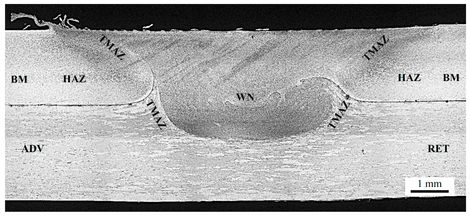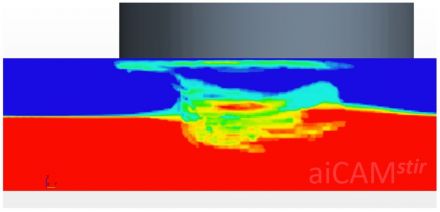Main Page: Difference between revisions
No edit summary |
No edit summary |
||
| Line 15: | Line 15: | ||
An international collaborative project will be conducted for producing the next generation of lap welding tools, which overcome the problems caused by thinning and hooking. | An international collaborative project will be conducted for producing the next generation of lap welding tools, which overcome the '''problems caused by thinning and hooking'''. | ||
A new set of tools will be evaluated and optimised by computational fluid dynamics regarding material flow. | A new set of tools will be evaluated and optimised by computational fluid dynamics regarding material flow. | ||
The industrially | The industrially funded project will be sponsored by a number of industrial companies from various industry sectors and leading '''universities and R&D organsations'''. | ||
Revision as of 21:40, 8 April 2021
aiCAMstir: Artificial Intelligence based Computer Aided Manufacturing of Friction Stir Welds
 Computional Fluid Dynamics will be used for optimising the tool design of aiCAMstir tools for lap welding[1] |
It is difficult to choose and optimise the friction stir welding tool design and welding parameters for lap welding, as shown by many publications.[2]
Thus, the objective is to add a new aiCAMstir computer aided manufacturing control system to FSW machines, which recommends (or even automatically optimises) parameters based on computational fluid dynamics (CFD), finite element analysis (FEA), design of experiments (DOE), Wikipedia-like open source cloud data and artificial intelligence (AI) including machine learning.
 Benchmark: Conventinal butt welding tool used for lap joints at 1200 rpm at 250 mm/min[3] |
 Computational fluid dynamics analysis of material flow using a conventional butt welding tool[1] |
An international collaborative project will be conducted for producing the next generation of lap welding tools, which overcome the problems caused by thinning and hooking.
A new set of tools will be evaluated and optimised by computational fluid dynamics regarding material flow.
The industrially funded project will be sponsored by a number of industrial companies from various industry sectors and leading universities and R&D organsations.
| Example | Example | Example |
| Example | Example | Example |
Test[4]
See also
References
- ↑ 1.0 1.1 Mike Lewis and Simon D. Smith: The Development of FSW Process Modelling for Use by Process Engineers. In: The Minerals, Metals & Materials Society 2021: Friction Stir Welding and Processing XI. 17 Feb 2021.
- ↑ Matthew Champagne (University of New Orleans): Investigation of 2195 and 2219 Post Weld Heat Treatments for Additive Friction Stir Lap Welds. Pages 9, 20-21.
- ↑ Egoitz Aldanondo, Javier Vivas, Pedro Álvarez (LORTEK) and Iñaki Hurtado (MU-ENG): Effect of Tool Geometry and Welding Parameters on Friction Stir Welded Lap Joint Formation with AA2099-T83 and AA2060-T8E30 Aluminium Alloys. Metals 2020, 10(7), 872, CC BY 4.0.
- ↑ Reference
